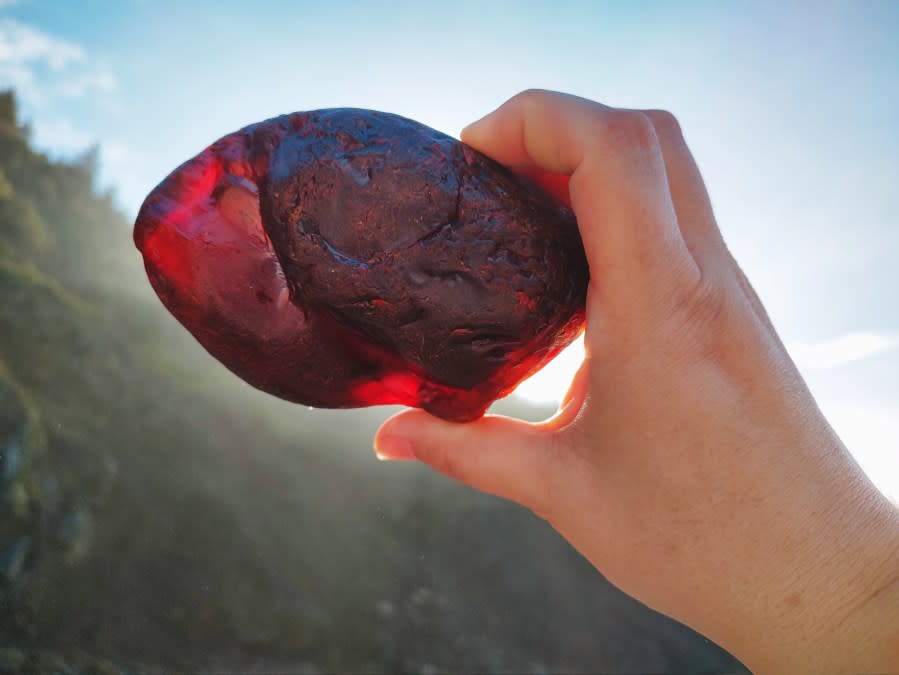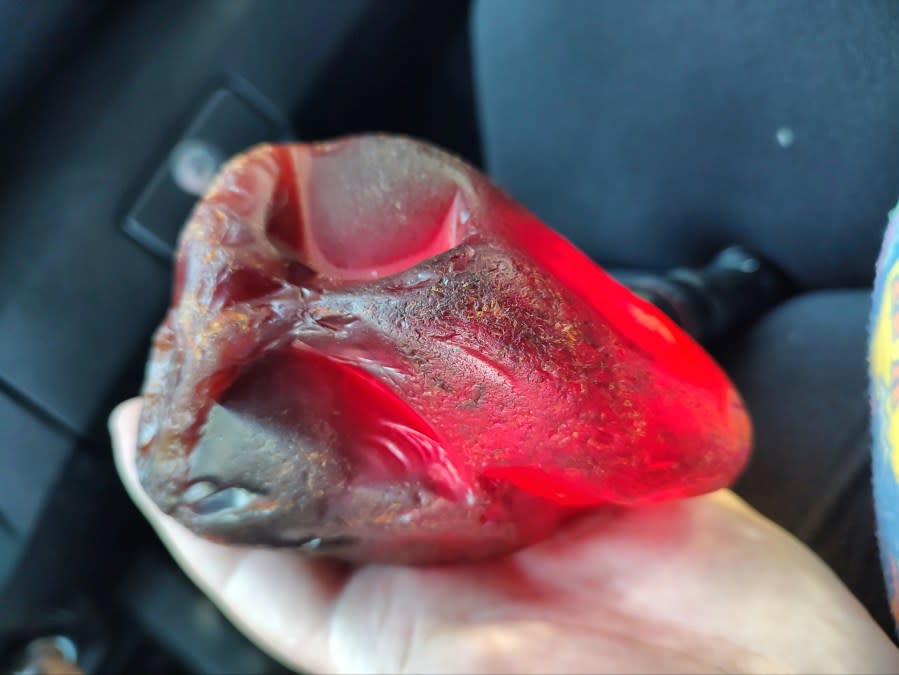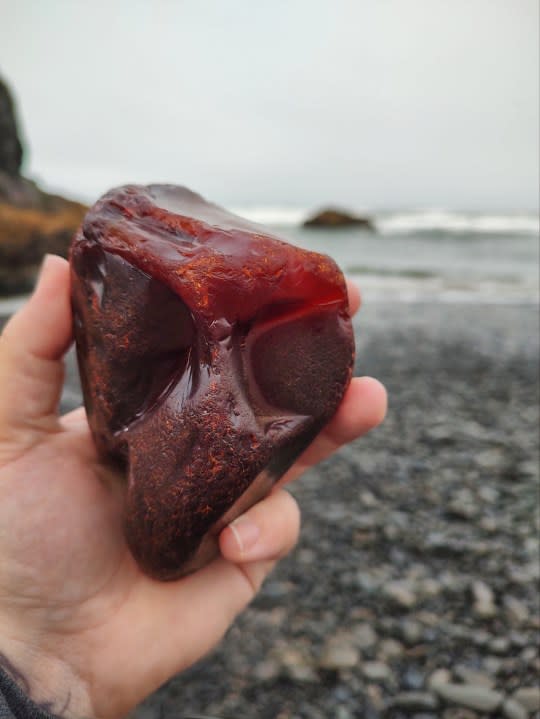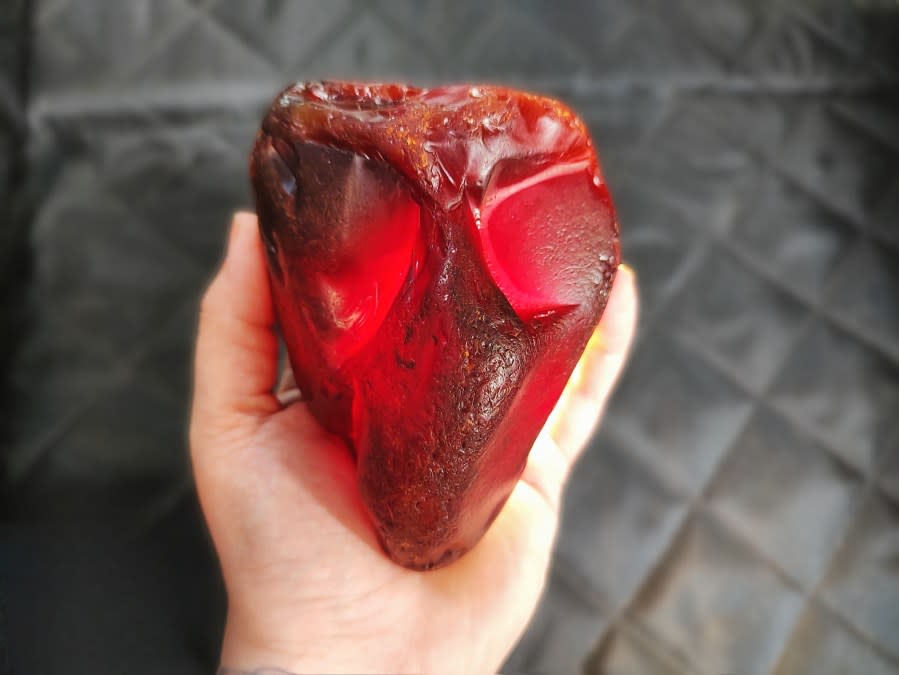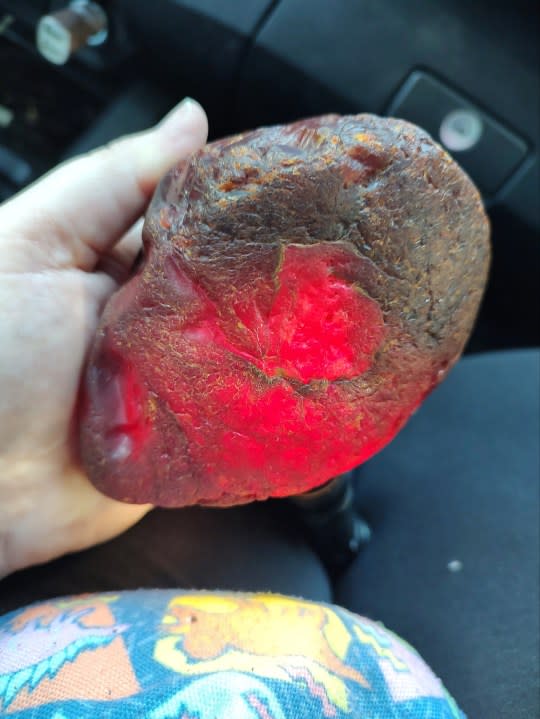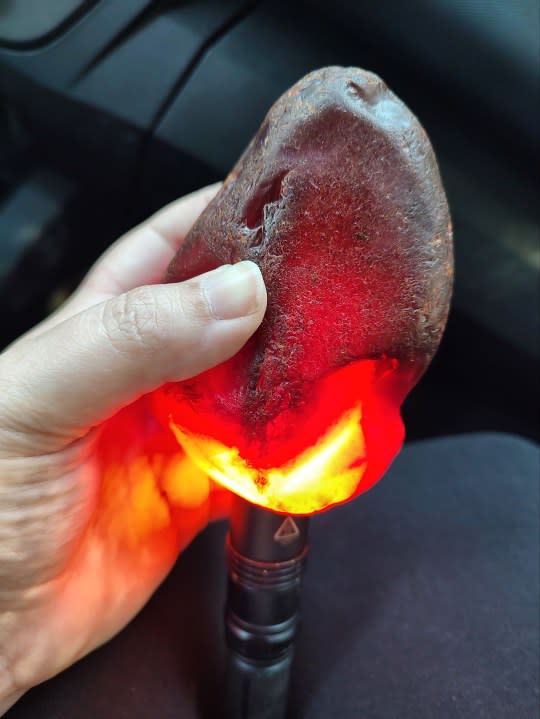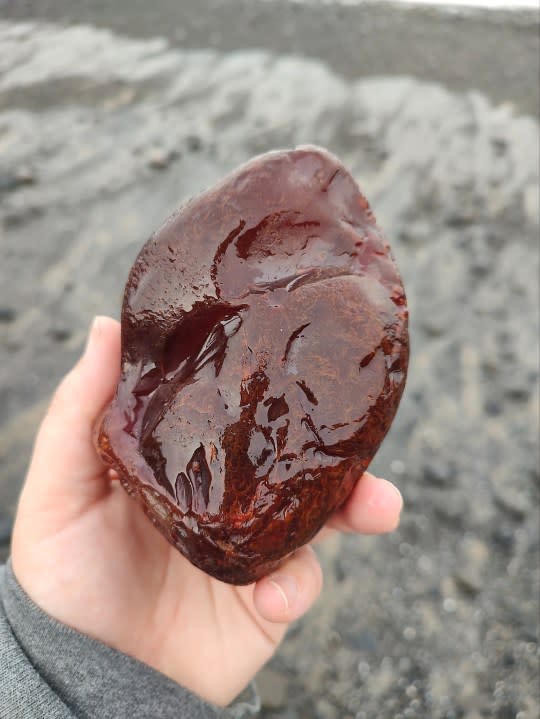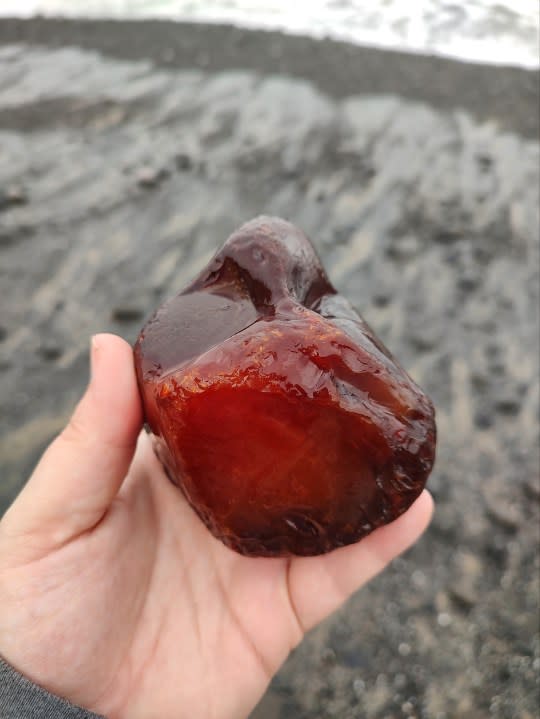Semiprecious stone shaped like human heart found on the Oregon Coast

PORTLAND, Ore. (KOIN) — A translucent, 2-pound rock the shape, color, and size of an anatomical human heart was recently found on the Oregon Coast.
The Ransom family of the greater Portland area told sister station KOIN 6 News that they were walking along Short Beach near Oceanside on March 29 when they found the stunning rock resting near the shoreline at low tide. Matt Ransom, who runs an Instagram account dedicated to rock hunting around Oregon, shared a video of the moment he discovered the extraordinary piece of rock.
Photos of a heart-shaped rock found on the Oregon Coast in March of 2024. (Photos provided by Matt Ransom) Oregon coast Oregon coast Oregon coast Oregon coast Oregon coast Oregon coast Oregon coast
Mike Darin, a geologist with the Oregon Department of Geology and Mineral Industries, told KOIN 6 News that the rock is a carnelian, not a true agate. Carnelians, he said, are a variety of chalcedony — a crystallized form of silica which, in this case, is colored red with a small amount of iron oxide.
“The rich red color, translucence, texture, and lack of banding suggest it is a carnelian,” Darin said. “Agates are partly defined by the presence of compositional banding. The apparent lack of banding in this specimen means it should not be classified as an ‘agate,’ per se. However, being identified as carnelian, it would be considered a variety of chalcedony.”
Many people pointed out the rock’s resemblance to an anatomical heart on social media after the Ransoms shared photos to the popular Facebook group Oregon Beach Agates and Beach Rockhounding. Following the response, the couple said they are naming the rock “Dragon’s Heart.”
Sports heroes rally around radio caller “Mark from Gastonia” after cancer diagnosis
While the carnelian was found shortly before April Fools’ Day, Darin said that the rock appears to have been formed naturally.
“As for the interesting shape, it looks to have been formed by natural processes of erosion, primarily physical abrasion from relentless wave action along the coast,” he said. “There are no obvious signs of tool marks that would suggest it was shaped by humans.”
For the latest news, weather, sports, and streaming video, head to Queen City News.
